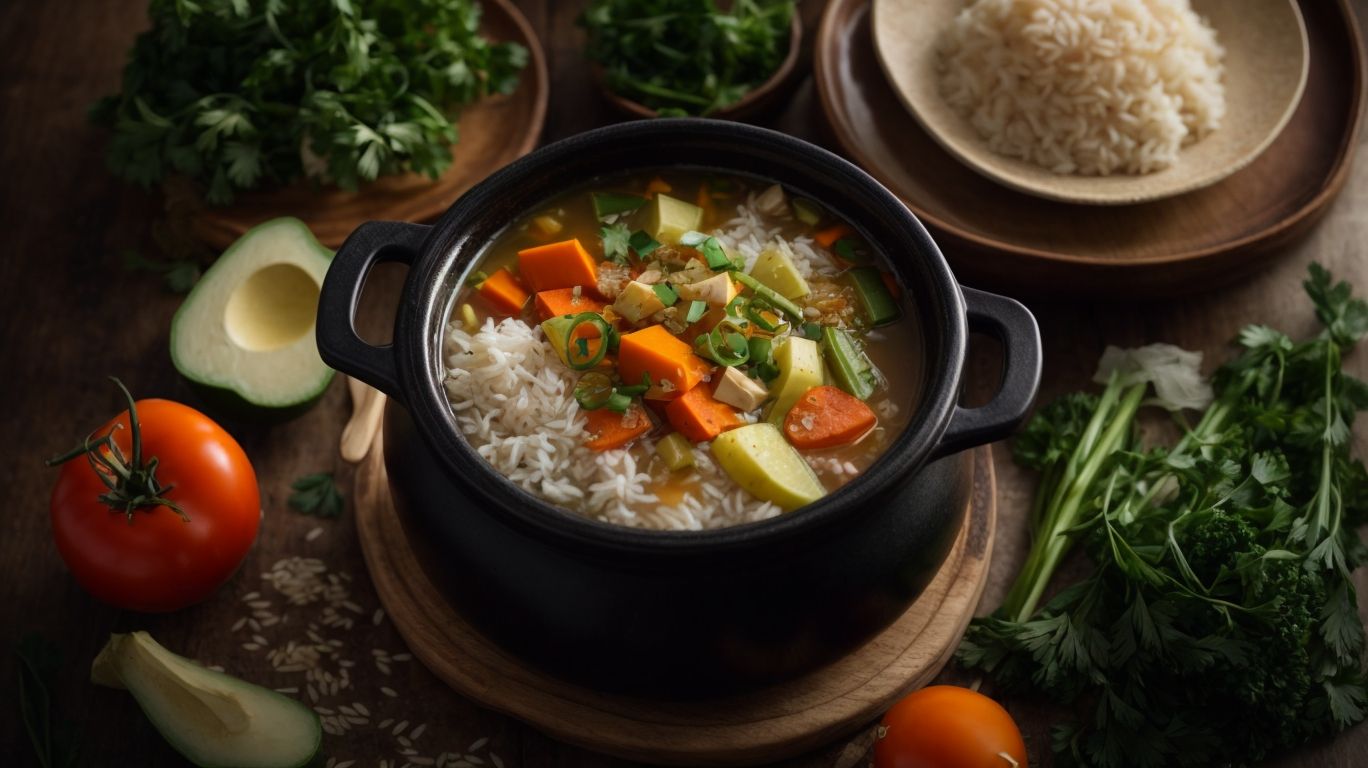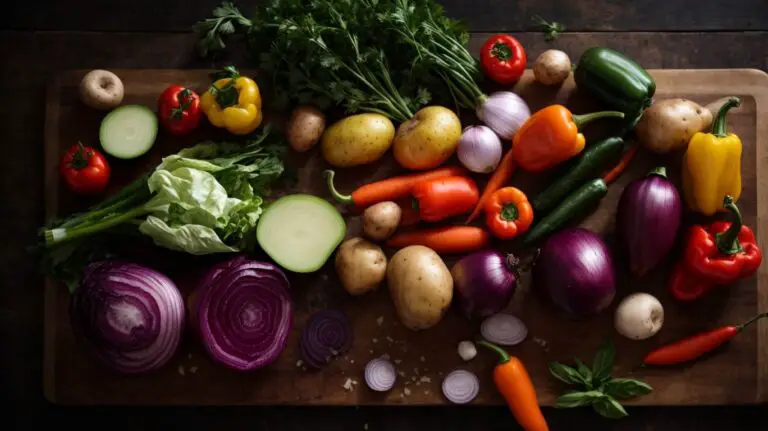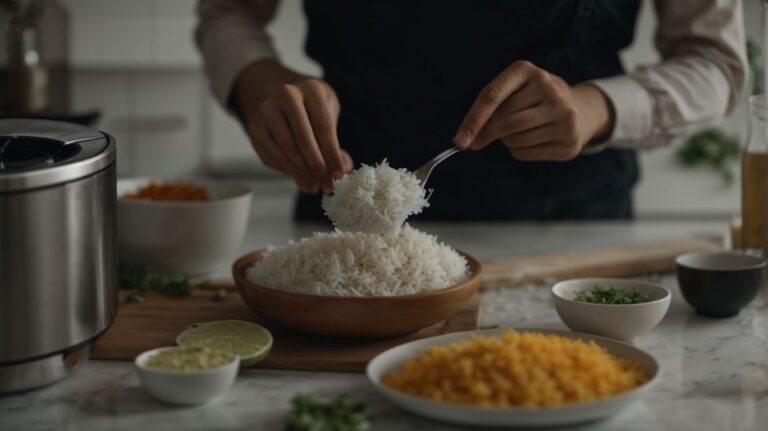How to Cook Rice Into Soup?
Looking for a delicious and comforting meal to warm you up on a chilly day? Rice soup is the answer!
We will explore the world of rice soup, from what it is and its benefits to how to make it at home. Follow me, Chris Poormet, as I guide you through the process of cooking rice into soup, sharing ingredients, step-by-step instructions, variations, tips, and tricks, as well as how to store and reheat this flavorful dish.
Get ready to elevate your soup game with this ultimate guide to rice soup!
Key Takeaways:
About Chris Poormet and Poormet.com
Chris Poormet, the renowned Culinary Blogger of the Year and former chef with expertise in food photography, is the creative mind behind Poormet.com, a popular blog dedicated to sharing delicious recipes and culinary tips.
His journey into the world of gastronomy began at a young age when he discovered his passion for cooking. Through years of hard work and dedication, Chris honed his culinary skills, garnering accolades for his innovative recipes and captivating food photography.
His commitment to creating engaging content around food has led to a loyal following on Poormet.com, where readers flock to discover mouth-watering dishes and learn valuable cooking techniques.
What Is Rice Soup?
Rice soup, a comforting and versatile dish, combines the heartiness of rice with the savory flavors of a well-seasoned broth, creating a wholesome meal that is both satisfying and nutritious.
Whether enjoyed during chilly evenings for its warmth or as a go-to remedy for those under the weather, rice soup has earned a place as a soul-soothing staple in many cultures. What sets this dish apart is its adaptability; from adding vegetables to meats or spices, the flavor profile can vary greatly.
The beauty of rice soup lies in its simplicity and ability to transform. It acts as a canvas to showcase a wide array of culinary influences, making it a staple in households worldwide. Be it a quick weeknight dinner or a dish to share with loved ones, rice soup is a versatile and comforting choice.
What Are the Benefits of Cooking Rice into Soup?
Cooking rice into soup offers numerous benefits such as enhancing the flavor profile, improving texture, and utilizing leftovers effectively, resulting in a hearty and flavorful dish that is easy to prepare and enjoy.
By incorporating rice into soup, you infuse the broth with an extra depth of taste as the grains slowly release their starch, creating a rich and comforting base.
The rice adds a delightful texture to the soup, offering a pleasant chewiness that contrasts beautifully with the other ingredients.
This method allows you to make use of leftover rice, reducing food waste while bolstering the dish with added substance and heartiness.
How to Make Rice Soup?
Preparing a delicious rice soup involves a few key steps, starting with gathering the necessary ingredients and simmering them together to infuse the broth with rich flavors and create a comforting dish that is perfect for any occasion.
To begin this culinary journey, select high-quality rice that complements the flavors you wish to highlight in your soup. Basmati rice is excellent for a fragrant touch, while arborio rice brings a creamy texture.
Start by rinsing the rice under cold water to remove excess starch, which can lead to a sticky consistency when cooked. Once rinsed, you can let the rice soak for a few minutes to ensure even cooking.
What Ingredients Do You Need?
To prepare a delectable rice soup, gather ingredients such as rice, broth, vegetables, spices, and seasonings to create a flavorful and wholesome dish that will delight your taste buds.
When selecting rice for your soup, opt for long-grain varieties like jasmine or basmati for their fluffy texture when cooked.
For the broth, choose a high-quality vegetable or chicken broth to serve as the flavorful base of your soup.
Include an array of vegetables such as carrots, celery, onions, and garlic to enhance the nutritional value and add depth of flavor.
In terms of spices, commonly used ones include bay leaves, garlic powder, paprika, and black pepper, but feel free to experiment with your preferred seasonings.
Remember, the key to a delicious rice soup lies in using fresh and quality ingredients and seasonings in just the right amounts to achieve a perfectly balanced taste profile.
Step-by-Step Instructions:
Follow these step-by-step instructions to prepare a delicious rice soup: start by cooking the rice, make the soup base, and then combine the rice and soup for a hearty and flavorful meal.
-
Begin by rinsing the rice under cold water to remove excess starch.
-
Then, in a pot, combine the rice with the appropriate amount of water and bring it to a boil.
-
Reduce the heat, cover the pot, and let the rice simmer until it’s cooked to perfection.
-
While the rice is cooking, prepare the soup base by sautéing onions, garlic, and your choice of vegetables in a separate pan.
-
Add broth or water to the sautéed vegetables and bring the mixture to a gentle simmer.
-
Combine the cooked rice and the flavorful soup base, allowing the flavors to meld together before serving piping hot.
Preparing the Rice
Preparing the rice for your soup involves cooking the grains to the desired tenderness, ensuring they absorb the flavors of the broth and contribute to the overall texture and heartiness of the dish.
Cooking rice for soup requires attention to the proper ratio of liquid to rice to achieve that perfect balance between a creamy consistency and individual, plump grains. The key is to simmer the rice in the broth, allowing it to absorb the moisture slowly for a rich flavor infusion. The cooking time can vary based on the type of rice used; for example, short-grain rice tends to release more starch, creating a thicker soup texture.
Making the Soup Base
Creating a flavorful soup base is essential for a delicious rice soup; simmering broth, seasonings, and aromatic ingredients together will form a rich foundation that complements the rice and enhances the overall taste of the dish.
Choosing the right broth is paramount; whether it’s a homemade stock, vegetable broth, or a flavorful bone broth, it sets the tone for your soup’s taste profile. Broth selection can make or break the dish.
Seasoning plays a crucial role as well – a harmonious blend of salt, pepper, herbs, and spices can elevate the flavors to new heights. Infusing the broth with garlic, onions, and bay leaves adds depth and complexity to the soup base.
Combining Rice and Soup
Combining the cooked rice with the savory soup allows the flavors to meld together, creating a harmonious blend of textures and tastes that result in a comforting and satisfying rice soup.
Once you have added the rice to the soup, it is crucial to stir gently to ensure that all the grains are fully coated and infused with the rich flavors of the broth. This process of flavor integration is essential for achieving a depth of taste that is both complex and well-balanced.
Next, bring the rice soup to a gentle simmer, allowing the ingredients to mingle and develop their flavors further. The gentle heat helps the flavors to meld together seamlessly, resulting in a cohesive and delicious end result that is greater than the sum of its parts.
What Are Some Variations of Rice Soup?
Rice soup offers endless variations to suit different tastes and preferences, including classic options like chicken and vegetable, as well as more exotic choices such as seafood rice soup, allowing for a diverse culinary experience.
Chicken rice soup, a beloved comfort food, boasts tender pieces of chicken combined with aromatic herbs and spices, creating a hearty and satisfying meal.
Vegetable rice soup, packed with colorful veggies and nutritious ingredients, is a wholesome choice for health-conscious individuals.
On the other hand, seafood rice soup presents a symphony of flavors from the sea, with succulent seafood adding a rich depth to the broth.
Each variation showcases how the right combination of ingredients can transform a simple dish into a culinary delight.
Chicken and Rice Soup
Chicken and rice soup is a classic comfort food dish that combines tender chicken pieces, seasoned broth, and a medley of vegetables to create a hearty and nutritious meal that is both satisfying and flavorful.
If you’re looking to recreate this wholesome dish at home, start by gathering the essential ingredients such as boneless chicken breasts, carrots, celery, onion, garlic, and long-grain rice. These key components form the base of the soup and infuse it with rich flavors.
- To begin the cooking process, sauté the diced vegetables in a large pot until they are tender.
- Add the chicken pieces and allow them to brown slightly before pouring in chicken broth to simmer the ingredients together.
- Season the soup with a blend of herbs and spices like thyme, bay leaves, salt, and black pepper for an added depth of flavor.
Let the soup simmer gently, allowing the ingredients to meld and develop a comforting aroma that fills the kitchen.
Vegetable and Rice Soup
Vegetable and rice soup is a quick and easy dish that combines fresh vegetables, savory spices, and seasoned broth to create a flavorful and comforting meal that is perfect for busy days or cozy evenings.
When preparing this delightful soup, select a variety of colorful vegetables like carrots, celery, bell peppers, and onions to enhance both the taste and visual appeal. Choosing aromatic ingredients such as garlic, ginger, and fresh herbs like thyme or parsley can elevate the overall flavor profile. To create a rich and satisfying broth, consider using vegetable stock or broth as the base and season it with a pinch of salt, pepper, and a hint of paprika for a subtle kick of spice.
Seafood and Rice Soup
Seafood and rice soup is a delightful fusion of fresh seafood, long-grain white rice, and a fragrant broth, simmered to perfection and garnished with chopped herbs for a culinary experience that balances delicate flavors with satisfying textures.
When preparing seafood and rice soup, the choice of seafood plays a vital role in enhancing the overall taste. Opt for a mix of shrimp, mussels, and squid for a diverse flavor profile. The long-grain white rice, such as jasmine or basmati, brings a light and fluffy texture to the dish, absorbing the flavors of the sea and broth harmoniously. To enrich the broth, consider adding aromatics like garlic, ginger, and lemongrass to infuse depth and complexity. Adjust the seasoning with a hint of soy sauce and a squeeze of fresh lime for a perfect balance of umami and acidity.
Tips and Tricks for Cooking Rice into Soup
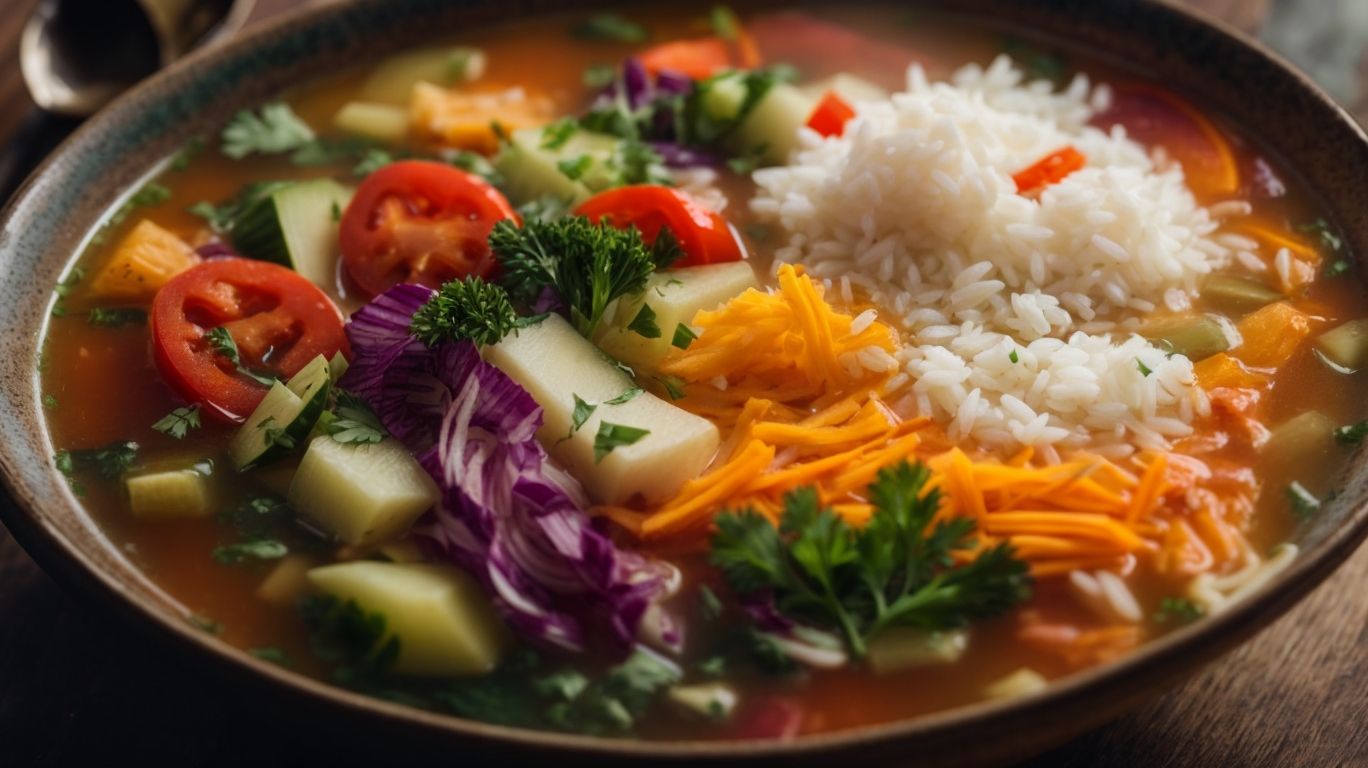
Credits: Poormet.Com – Joshua Moore
Mastering the art of cooking rice into soup requires attention to detail and some handy tips and tricks, such as controlling the broth-to-rice ratio, seasoning with precision, and storing leftovers separately to maintain optimal flavors and textures.
In terms of the broth-to-rice ratio, a general guideline is to use approximately 2 cups of broth for every cup of rice, but this can vary based on personal preference for soup consistency. Adjusting this ratio can help you achieve the desired thickness or liquidity of your rice soup.
Seasoning is a vital step in elevating the flavors of your dish. You can experiment with a variety of herbs, spices, and aromatics to add depth and complexity to the soup. Remember, it’s easier to add seasoning gradually than to fix an overly salty or bland soup.
For storing leftovers, place the rice soup in airtight containers or freezer bags, making sure to remove excess air to prevent freezer burn. Label and date the containers for easy identification and consume within a few months for the best quality.
What to Serve with Rice Soup?
Pairing rice soup with the right accompaniments can elevate the dining experience; consider serving it with crusty bread, a fresh salad, or steamed vegetables to balance the meal and add complementary flavors and textures.
Crusty bread, with its crunchy exterior and soft interior, provides a delightful contrast to the comforting warmth of the rice soup. Its buttery notes can enhance the flavors of the soup, making each bite a harmonious blend of textures.
A fresh salad tossed with vibrant vegetables and a zesty dressing can bring a refreshing element to the meal, creating a burst of flavors that complements the heartiness of the soup. The crispness of the greens adds a lightness that balances the richness of the dish.
Steamed vegetables, such as broccoli, carrots, or green beans, offer a nutritious and colorful addition to the meal. Their natural sweetness and tender texture pair well with the simplicity of rice soup, providing a wholesome and well-rounded dining experience.
How to Store and Reheat Rice Soup?
Properly storing and reheating rice soup is essential for preserving its quality and flavors; refrigerate leftovers promptly, and when reheating, choose gentle methods like stovetop warming to retain the soup’s integrity and taste.
When storing leftover rice soup, ensure that it is transferred to airtight containers to prevent moisture loss and maintain freshness. For optimal results, divide the soup into smaller portions before refrigerating, allowing for quicker and more even reheating later on. Avoid letting the soup sit at room temperature for an extended period, as this promotes bacterial growth and compromises food safety. When ready to reheat, consider using a double boiler setup to gently warm the soup without scorching or overheating. This method helps preserve the delicate flavors and textures inherent in rice-based dishes.
Final Thoughts on Cooking Rice into Soup
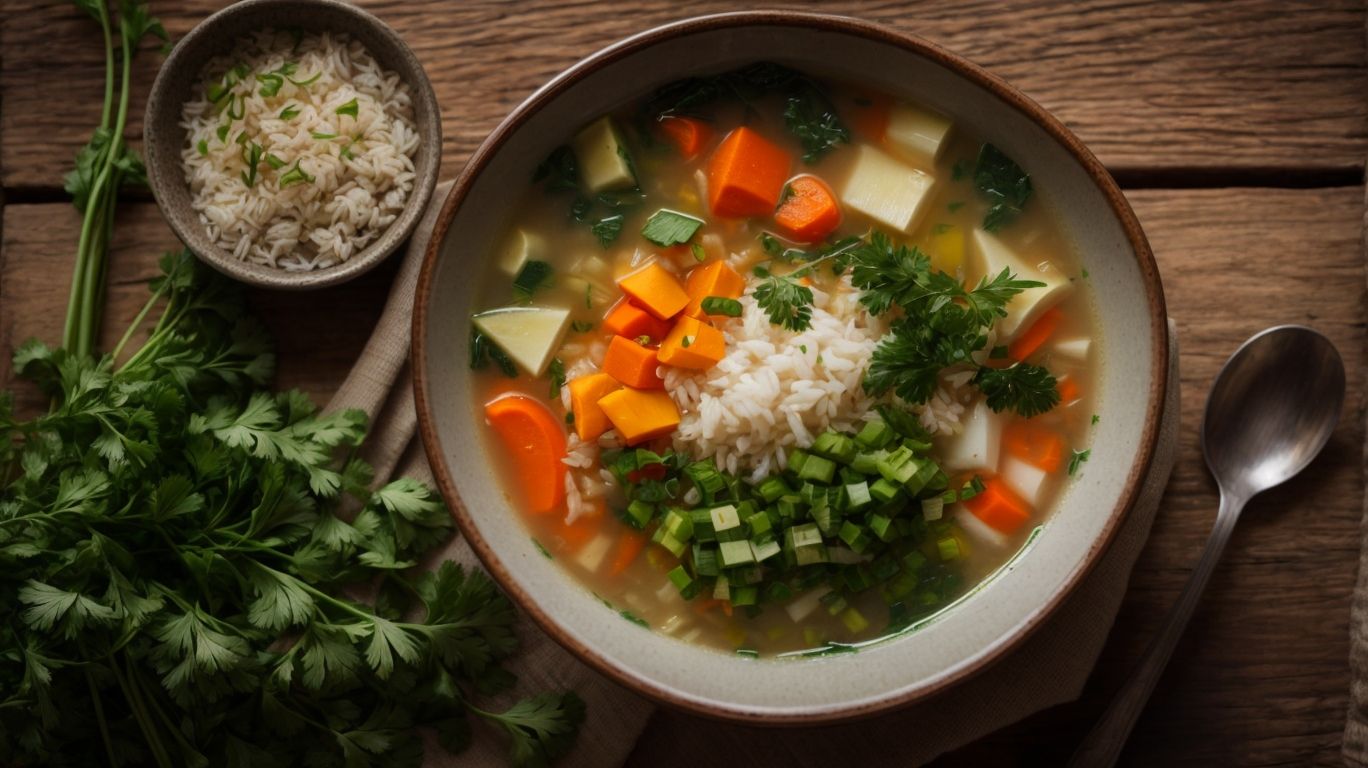
Credits: Poormet.Com – Noah Harris
Cooking rice into soup is a rewarding culinary endeavor that allows for creativity in flavor combinations, provides comfort in each bowl, and offers a versatile dish suitable for any occasion or craving.
When preparing rice soup, one can experiment with various ingredients such as vegetables, proteins, herbs, and spices to elevate the taste profile. The simmering process allows the rice to absorb the flavors, creating a wholesome and hearty meal. The soothing warmth and nourishment of a bowl of rice soup make it ideal for cozy evenings or when feeling under the weather.
One of the joys of making rice soup lies in its adaptability; whether you prefer a brothy consistency or a thicker, creamier texture, this dish can be tailored to suit your preferences. The freedom to customize toppings and garnishes like crispy shallots, fresh cilantro, or a drizzle of chili oil adds a personal touch to each serving, making it a truly personalized dining experience.
Frequently Asked Questions
What ingredients do I need to cook rice into soup?
To cook rice into soup, you will need rice, broth or stock, vegetables, protein such as chicken or tofu, and seasonings like salt, pepper, and herbs.
What is the best type of rice to use for soup?
Short-grain rice, such as arborio or sushi rice, is the best type of rice to use for soup. It has a higher starch content, which helps thicken the soup and give it a creamy texture.
Can I use leftover rice to make soup?
Yes, leftover rice is a great option for making soup. Just make sure to add the rice towards the end of the cooking process to prevent it from getting too mushy.
How much rice should I use for soup?
The amount of rice you use for soup depends on the recipe and personal preference. As a general rule, you can use 1/4 to 1/2 cup of rice for every 2 cups of broth.
Can I use a rice cooker to cook rice for soup?
Yes, you can use a rice cooker to cook rice for soup. Follow the instructions for cooking rice in your specific rice cooker, and then add the cooked rice to your soup near the end of the cooking process.
How do I prevent the rice from getting mushy in the soup?
To prevent the rice from getting mushy in the soup, cook it separately and add it to the soup towards the end of the cooking process. You can also rinse the rice before cooking to remove excess starch, which can make the rice stick together and become mushy.

